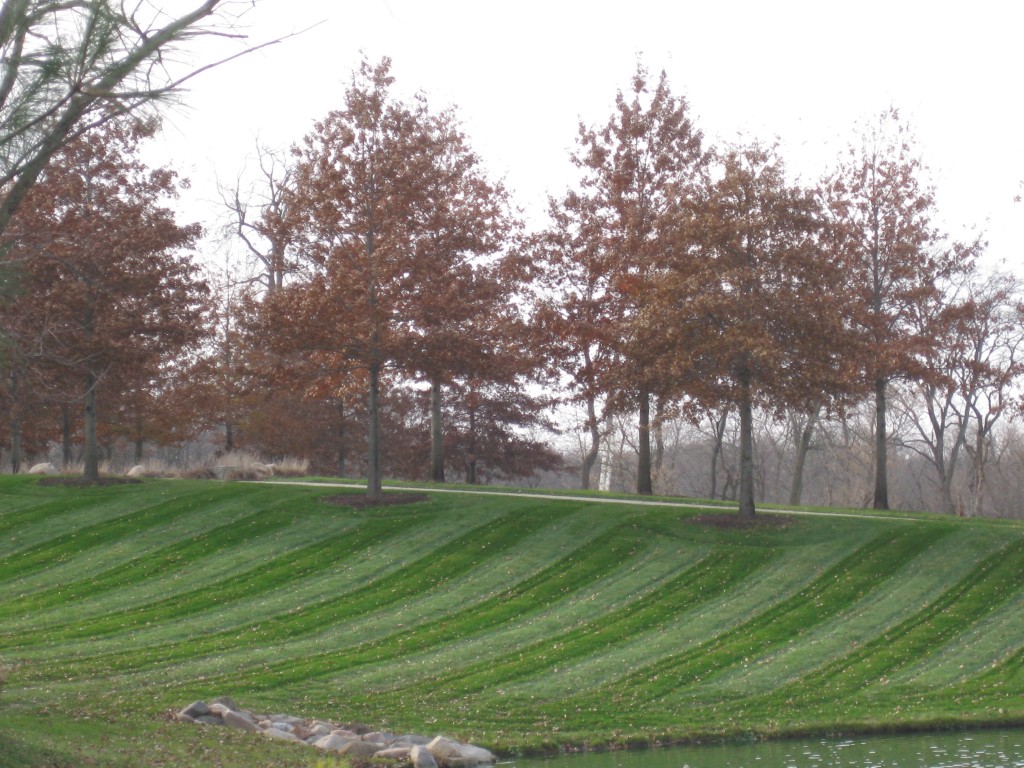Turf density can be obtained by following good horticultural practices. There are many variables that determine turf density. There is more involved in obtaining a quality lawn, then just throwing some fertilizer on your lawn. While fertilizing does play a key role in the turf density, it is not the only determining factor. You can accomplish turf density by following some of the suggestions below. These are not a cure-all for your lawn, but most suggestions will definitely yield results. If you continue to have a struggling lawn after attempting these suggestions, you may need to contact your local lawn care professional.
Factors that will increase turf density.
- Soil will pay one of the biggest roles in the success of your lawn. Clay soil will reduce root establishment and cause the grass to burn out faster in the summer. Sandy soil will cause moisture loss which will lead to poor quality grass. Black soil with the correct pH will provide the best opportunities for turf density.
- Proper watering will help lead to a dense lawn. Since the overwhelming majority of the grass plant consists of water, grass plants will die out from lack there of. Dying grass due to drought will cause thinning in lawns. Make sure that your lawn gets at least 1″ of rain a week or more.
- Mowing can also cause problems with turf density. If you mow your lawn too short, most likely it will be thin and unhealthy. If you leave your grass too long, cutting your lawn will stress the grass. For most cool season grasses, cut your grass at 3″ in the spring and fall and 4″ in the summer.
- Aeration and over-seeding will help energize your lawn. Aeration will relieve compaction, allowing water and other nutrients to reach the root system of the grass. Seeding will help increase the density by adding more grass plants to your lawn.
- Reducing shade in your lawn by pruning mature trees will help allow sun light to reach your grass. With out at least 2 hours of sunlight a day, most grasses will not grow to their full potential.

